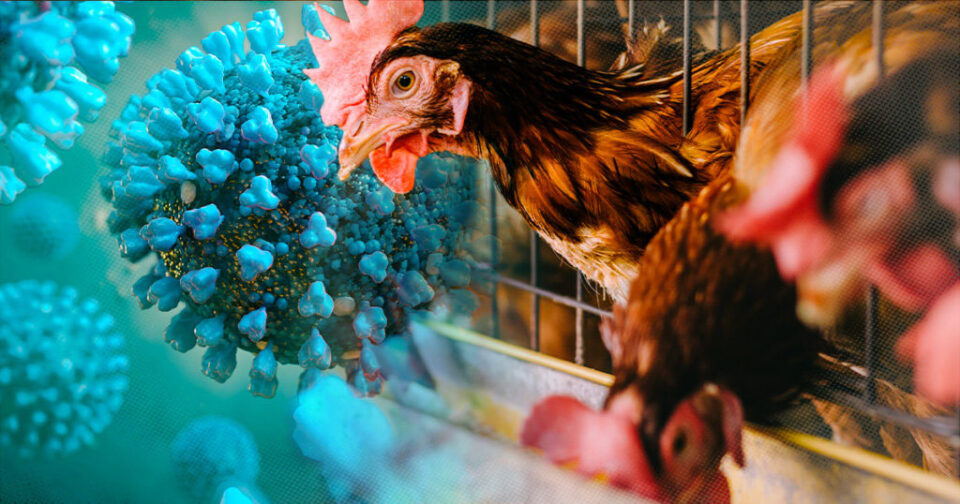A highly pathogenic avian influenza has been spreading in the U.S., making headlines as the price of eggs soared at the start of the year and fears of the next zoonotic pandemic creep into popular media. A University of Maryland (UMD)-led team of researchers tracked the arrival and progression of the deadly bird flu (H5N1) in North America to determine how this outbreak is different from previous ones.
The team found that the deadly impact on wild birds and a shift from seasonal to year-round infections signal dangerous changes in avian influenza in the U.S. They concluded that there is an urgent need for unprecedented coordination at a national and regional-scale to manage the spread of a disease reaching across jurisdictions and disciplines. The team also suggests that H5N1 will likely become endemic, potentially posing risks to food security and the economy.
The paper was published April 19, 2023, in the journal Conservation Biology.
“We’ve been dealing with low pathogenic avian influenza for decades in the poultry industry, but this is different.” said Jennifer Mullinax, assistant professor in the UMD Department of Environmental Science & Technology and a co-author of the study. Low pathogenic disease is less contagious and easier to contain than the highly pathogenic variety.
“This high pathogenic virus is wiping out everything in numbers that we’ve never seen before,” Mullinax said. “This paper illustrates how unprecedented it is, and describes what we think is coming. It’s really a call to arms saying, we can’t afford to address this from our individual silos. Federal agencies, state agencies, the agriculture sector and wildlife management, we are all going to have to deal with this together, because we can’t afford not to.”
The team’s conclusions are based on an analysis of five different data sources that provide information on the incidence of highly pathogenic avian influenza in wild birds and poultry focusing on the USA and Canada as well as a global database from 2014 through early 2023.
The data show the progression of highly pathogenic H5N1 as it spread from Eurasia to the U.S. where it was first documented in late 2021. By October 2022, the disease had resulted in 31 reported wild bird mass mortalities, accounting for an estimated 33,504 wild bird detections in the U.S. and Canada. In addition, more than 58 million domestic poultry were infected or had to be culled to limit the spread of infection in the U.S. and 7 million in Canada.
In 2015, an outbreak of highly pathogenic H5N8 in the U.S. led to the culling of 50 million poultry birds. But the disease was eradicated in North America that same year, largely because it did not seriously impact wild birds, which made containment through culling poultry relatively easy. But H5N1 poses new challenges.
“Unlike H5N8, this disease is heavily impacting wild birds,” said Johanna Harvey, a postdoctoral researcher at UMD and lead author of the study. “It’s difficult to estimate how many birds are truly affected across wild populations, but we’re seeing dramatic disease impacts in raptors, sea birds and colonial nesting birds. And we now have the highest amount of poultry loss to avian influenza, so this is a worst-case scenario.”
The data also reveals a shift from a seasonal to a year-round disease. Previous outbreaks of avian influenza — whether low pathogenic virus that is endemic in the U.S. or highly pathogenic H5N8 in 2015 — typically occurred in the fall, which meant farmers could prepare for seasonal outbreaks, cull flocks to halt the spread of disease, and have nearly a full year to recover losses. But this new virus appears sustained throughout the year, with summertime disease detections in wild birds and poultry outbreaks occurring in both the spring and fall.
Although declaring a disease endemic is a complicated process, the authors of the study suggest that the U.S. will likely follow patterns seen in Europe where highly pathogenic avian influenza is already being treated as an endemic disease rather than something that can be eradicated.
The research team recommends a management approach based on a method called Structured Decision-Making, which follows a specific process of identifying and bringing together relevant individuals with an interest, expertise or stake in an issue, distinguishing the unknown from the known factors and establishing measurable goals and actions with quantifiable results. The process is much like dealing with a human pandemic.
“Good decision science is what you do when you don’t know what is going to happen next,” said Mullinax, who teaches decision-making science. “This is a novel virus for North American birds, so no one knows if their immune systems will adapt, or how long that will take, or what that will look like. Where do we direct our funds for maximum benefit? Is it a vaccine? How do we track it in wild birds? Do we test the water or the soil? What are the triggers for different actions, and how do we measure if we’re succeeding? These decisions have to be made on multiple scales.”
The paper outlines examples of potential triggers for action, identifying the relevant decision-makers required to coordinate a response and some of the challenges that may come up. The researchers hope their work will bring key players to the table to consider the next steps.

